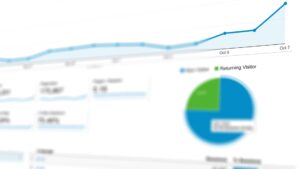Are you an entrepreneur looking to promote your products or services online? If so, affiliate marketing may be the answer you’re looking for. In this article, we’ll explore how you can use affiliate marketing to promote your own products or services effectively.
Affiliate marketing can be a powerful tool for promoting your own products or services. Here are some steps you can take to utilize affiliate marketing to promote your offerings: Set up an affiliate program. Recruit affiliates. Provide affiliates with promotional materials. Offer attractive commissions. Track and monitor affiliate performance: Use tracking tools to monitor your affiliate program’s performance and identify areas for improvement. This will help you optimize your program and ensure that your affiliates are driving meaningful results for your business.
Affiliate marketing can be an effective way to promote your own products or services. By setting up an affiliate program, recruiting affiliates, and providing them with the tools they need to promote your offerings, you can drive more traffic and sales to your business.
Set up an affiliate program
An affiliate program is a marketing strategy that allows you to partner with other businesses or individuals (affiliates) who will promote your products or services to their audience in exchange for a commission.
To set up an affiliate program, you can use an affiliate platform like ShareASale, CJ Affiliate, or ClickBank. These platforms provide a range of tools and resources that make it easy to manage your affiliate program.
When you set up an affiliate program, you’ll create a unique link or code that your affiliates can use to promote your products or services.
When someone clicks on that link and makes a purchase, the affiliate earns a commission based on the agreed-upon terms of your program.
Using an affiliate platform to set up your program makes it easier to manage and track your affiliates’ performance.
You’ll be able to see how many clicks, leads, and sales each affiliate is generating, and you can use this information to optimize your program and improve your results.
Setting up an affiliate program can be a cost-effective way to promote your products or services and reach a wider audience.
By using an affiliate platform, you can streamline the process of managing your program and focus on building relationships with your affiliates to drive more sales and revenue for your business.
| How to set up an affiliate program | Why set up an affiliate program | Example of an affiliate program |
|---|---|---|
| 1. Choose an affiliate platform like ShareASale, CJ Affiliate, or ClickBank. | 1. Increase brand awareness and reach a wider audience. | Amazon Associates is an affiliate program that allows affiliates to promote and earn a commission on products sold through Amazon. |
| 2. Set up your account and create a program agreement that outlines the terms and conditions of your program. | 2. Cost-effective marketing strategy as you only pay commissions when a sale is made. | Shopify Affiliate Program allows affiliates to earn a commission for each person who signs up for a paid Shopify plan through their unique referral link. |
| 3. Create unique links or codes for your affiliates to promote your products or services. | 3. Build relationships with affiliates who can become advocates for your brand. | Bluehost Affiliate Program allows affiliates to earn a commission on each sale made through their referral link to Bluehost web hosting services. |
| 4. Set commission rates and payment terms. | 4. Track performance and optimize your program for better results. | Udemy Affiliate Program allows affiliates to earn a commission on each sale made through their referral link to Udemy online courses. |
| 5. Promote your affiliate program to attract affiliates to join. | 5. Expand your customer base and increase revenue. | Booking.com Affiliate Partner Program allows affiliates to earn a commission on each booking made through their referral link to Booking.com. |
Setting up an affiliate program can benefit your business by increasing your brand’s visibility, reaching a wider audience, and generating revenue through commission-based sales.
By using an affiliate platform, you can easily manage and track your program’s performance, build relationships with affiliates, and optimize your program for better results.
Examples of successful affiliate programs include Amazon Associates, Shopify Affiliate Program, Bluehost Affiliate Program, Udemy Affiliate Program, and Booking.com Affiliate Partner Program.

Recruit affiliates
To recruit affiliates for your program, you’ll need to identify individuals or businesses that are relevant to your niche and have an audience that would be interested in your products or services. Here are some steps you can take to find potential affiliates:
Research relevant blogs and websites:
Look for blogs and websites related to your industry or niche. Check out their content and see if they have an audience that would be interested in your products or services. You can reach out to the website owner or blogger and propose a partnership.
Leverage social media:
Use social media platforms like Twitter, Instagram, and LinkedIn to find potential affiliates. Look for individuals or businesses that are active in your niche or industry and have a following that aligns with your target audience.
Attend events:
Attend industry events and conferences to meet potential affiliates in person. This can be a great way to build relationships and establish partnerships with individuals or businesses in your industry.
Join affiliate networks:
Join affiliate networks like ShareASale, CJ Affiliate, or ClickBank to connect with potential affiliates who are already looking for partnership opportunities.
When you reach out to potential affiliates, be sure to explain the benefits of partnering with your program, including the commission structure, promotional materials you’ll provide, and the potential for increased revenue. You can also offer incentives for affiliates who perform well, such as bonuses or exclusive access to your products or services.
Recruiting affiliates requires some research and outreach, but it can be a great way to expand your reach and drive more sales for your business.
Recruiting affiliates can be a valuable strategy for growing your business and increasing sales. By partnering with individuals or businesses that have an audience aligned with your target market, you can reach a wider audience and increase your brand awareness. Here are some steps to help you recruit affiliates:
| Step | How to Do It | Why to Do It | Example |
|---|---|---|---|
| 1 | Research relevant blogs and websites | Identify potential partners who have an audience interested in your products or services. | If you sell organic skincare products, you can reach out to a popular beauty blog that focuses on natural beauty products. |
| 2 | Leverage social media | Find individuals or businesses that are active in your niche or industry and have a following that aligns with your target audience. | If you sell pet accessories, you can search for popular pet influencers on Instagram who have a large following. |
| 3 | Attend events | Build relationships and establish partnerships with individuals or businesses in your industry. | If you sell fitness equipment, you can attend a fitness expo and network with gym owners and personal trainers. |
| 4 | Join affiliate networks | Connect with potential affiliates who are already looking for partnership opportunities. | If you sell digital products, you can join an affiliate network like ClickBank to find affiliates interested in promoting digital products. |
When you reach out to potential affiliates, be sure to explain the benefits of partnering with your program, including the commission structure, promotional materials you’ll provide, and the potential for increased revenue. You can also offer incentives for affiliates who perform well, such as bonuses or exclusive access to your products or services.
Recruiting affiliates can help you increase your reach and drive more sales for your business. It allows you to tap into the audience of others in your industry or niche, without the need for additional marketing efforts on your part. By building relationships with affiliates, you can establish a long-term partnership that benefits both parties.
Provide affiliates with promotional materials
To help your affiliates promote your products or services effectively, it’s important to provide them with promotional materials that are high-quality, on-brand, and easy to use. Here are some types of promotional materials you might consider providing to your affiliates:
Graphics and banners:
Provide your affiliates with high-quality graphics and banners that they can use on their website or social media profiles to promote your products or services. Make sure these graphics are consistent with your brand identity and include a clear call-to-action.
Social media posts:
Create social media posts that your affiliates can share with their audience to promote your products or services. These might include images, videos, or links to your website. Be sure to include hashtags and tags to help increase visibility.
Email templates:
Provide your affiliates with pre-written email templates that they can send to their subscribers to promote your products or services. These emails should be well-written and include a clear call-to-action.
Product reviews and testimonials:
Encourage your affiliates to write product reviews or testimonials for your products or services. These can be powerful marketing tools that help build credibility and increase conversions.
Make sure to provide your affiliates with clear instructions on how to use these materials and how to properly disclose their affiliate relationship when promoting your products or services.
You might also consider providing training or support to help your affiliates get the most out of your promotional materials.
Providing high-quality promotional materials can help your affiliates promote your products or services more effectively and drive more traffic and sales to your business.

Here’s a table summarizing the information on providing affiliates with promotional materials:
| What to provide | Why provide it | Example |
|---|---|---|
| Graphics and banners | High-quality visuals catch the eye and can increase click-through rates | A banner featuring your product with a clear call-to-action |
| Social media posts | Social media is a powerful tool for promotion and can increase brand awareness | A pre-written tweet with a product image and relevant hashtags |
| Email templates | Pre-written emails save time and ensure a consistent message | A promotional email with a clear call-to-action and a link to your website |
| Product reviews and testimonials | User-generated content can increase trust and credibility | A review from a satisfied customer with a link to purchase the product |
By providing your affiliates with these materials, you can help them promote your products or services more effectively and drive more traffic and sales to your business.
Be sure to provide clear instructions on how to use the materials and how to properly disclose their affiliate relationship when promoting your products or services.
Additionally, offering training or support can help your affiliates get the most out of these materials.
Offer attractive commissions
To incentivize affiliates to promote your products or services, it’s important to offer attractive commissions that will motivate them to put in the effort to drive sales. Here are some tips for setting commission rates:
Research industry standards:
Look at what commission rates other businesses in your industry are offering to their affiliates. This can give you a sense of what’s competitive and help you set a rate that will attract high-quality affiliates.
Consider your profit margins:
Make sure your commission rates are sustainable and won’t eat into your profit margins too much. You want to offer a rate that’s attractive to affiliates, but also makes financial sense for your business.
Offer higher commissions:
Consider offering higher commission rates for affiliates who generate more sales. This can motivate affiliates to work harder to drive more traffic and conversions.
Provide bonuses and incentives:
Consider offering bonuses or incentives to affiliates who perform well or reach certain milestones. This can help keep affiliates motivated and engaged.
When setting your commission rates, make sure to clearly communicate the terms of your program to your affiliates.
Be transparent about how commissions are calculated and when payments will be made.
You might also consider offering additional resources or support to affiliates who are struggling to generate sales.
Offering attractive commissions is a key part of running a successful affiliate program. By providing incentives to your affiliates, you can build a strong network of partners who are motivated to promote your products or services and help grow your business.
Here’s a table on offering attractive commissions to affiliates:
| What to do | Why do it | Example |
|---|---|---|
| Research industry standards | Helps ensure your commission rates are competitive and attractive to affiliates | Look at what commission rates other businesses in your industry are offering |
| Consider profit margins | Helps ensure your commission rates are sustainable for your business | Set a commission rate that won’t eat into your profit margins too much |
| Offer tiered commissions | Motivates affiliates to work harder to generate more sales | Offer a higher commission rate for affiliates who generate more than a certain number of sales |
| Provide bonuses and incentives | Helps keep affiliates motivated and engaged | Offer a bonus to affiliates who generate a certain amount of sales within a specific time frame |
When setting your commission rates, be sure to clearly communicate the terms of your program to your affiliates, including how commissions are calculated and when payments will be made. This transparency can help build trust and motivate affiliates to work harder to promote your products or services.
Consider offering resources or support to affiliates who are struggling to generate sales, such as training or marketing materials.
Offering attractive commissions is an important part of building a successful affiliate program. By incentivizing affiliates to promote your products or services, you can build a strong network of partners who can help grow your business.
Track and monitor affiliate performance
Tracking and monitoring your affiliate program’s performance is essential to optimizing your program and ensuring that your affiliates are driving meaningful results for your business.
Here are some tools and metrics you can use to track and monitor your affiliate program’s performance:
Affiliate tracking software:
Use an affiliate tracking software, such as Refersion or Post Affiliate Pro, to track affiliate clicks, conversions, and commissions. This will allow you to monitor which affiliates are driving the most sales and how much commission you owe each affiliate.
Conversion rate:
Monitor your conversion rate, which is the percentage of visitors who make a purchase after clicking on an affiliate link.
This will help you identify which affiliates are driving high-quality traffic to your site and which ones may need additional support.
Average order value:
Monitor your average order value, which is the average amount of money each customer spends on your site. This can help you identify which affiliates are driving higher-value sales and how to optimize your program to attract more of these customers.
Return on investment (ROI):
Calculate your program’s ROI, which is the amount of revenue generated by your program compared to the amount you spend on commissions and other program costs.
This will help you determine whether your program is generating a positive return and how to optimize it for maximum profitability.
By tracking and monitoring these metrics, you can identify areas for improvement in your affiliate program and make data-driven decisions to optimize your program for success.
You might also consider providing regular reports and updates to your affiliates to keep them informed about their performance and to encourage them to continue promoting your products or services.
Here is a table outlining how to track and monitor affiliate performance, why it’s important, and an example:
| Metric/Tool | How to Do It | Why to Do It | Example |
|---|---|---|---|
| Affiliate Tracking Software | Use software such as Refersion or Post Affiliate Pro to track clicks, conversions, and commissions | Track which affiliates are driving the most sales and how much commission you owe each affiliate | Refersion tracks clicks and conversions for each affiliate and provides a dashboard to monitor performance |
| Conversion Rate | Monitor the percentage of visitors who make a purchase after clicking on an affiliate link. | Identify which affiliates are driving high-quality traffic to your site and which ones may need additional support. | Affiliate A has a conversion rate of 5% while Affiliate B has a conversion rate of 1%. |
| Average Order Value | Monitor the average amount of money each customer spends on your site. | Identify which affiliates are driving higher-value sales and how to optimize your program to attract more of these customers. | Affiliate C drives an average order value of $100 while Affiliate D drives an average order value of $50. |
| Return on Investment (ROI) | Calculate the amount of revenue generated by your program compared to the amount spent on commissions and other program costs. | Determine whether your program is generating a positive return and how to optimize it for maximum profitability. | The program generated $10,000 in revenue and incurred $5,000 in commission and program costs, resulting in an ROI of 100%. |
| Affiliate Reports | Provide regular reports and updates to your affiliates to keep them informed about their performance. | Encourage affiliates to continue promoting your products or services. | You send Affiliate E a monthly report showing their clicks, conversions, and commissions earned. |
By tracking and monitoring these metrics, you can make data-driven decisions to optimize your affiliate program for success and ensure that your affiliates are driving meaningful results for your business.

Here’s a table summarizing the key steps for using affiliate marketing to promote your own products or services:
| Step | Description |
|---|---|
| Set up an affiliate program | Use an affiliate platform like ShareASale, CJ Affiliate, or ClickBank to set up your affiliate program. This will allow you to offer commissions to affiliates who promote your products or services. |
| Recruit affiliates | Reach out to potential affiliates who are relevant to your niche and have an audience that would be interested in your offerings. You can find potential affiliates through social media, forums, or by researching blogs or websites related to your industry. |
| Provide affiliates with promotional materials | Give your affiliates the tools they need to promote your products or services effectively. This might include graphics, banners, social media posts, or email templates. |
| Offer attractive commissions | Incentivize affiliates to promote your products or services by offering attractive commissions. This can help you attract high-quality affiliates and encourage them to put in the effort to promote your offerings. |
| Track and monitor affiliate performance | Use tracking tools to monitor your affiliate program’s performance and identify areas for improvement. This will help you optimize your program and ensure that your affiliates are driving meaningful results for your business. |
By following these steps, you can build a strong affiliate marketing program that helps you reach new customers, increase sales, and grow your business.
Conclusion
In conclusion, affiliate marketing can be a powerful tool for promoting your own products or services. By setting up an affiliate program, recruiting high-quality affiliates, providing them with promotional materials, offering attractive commissions, and tracking their performance, you can build a strong network of partners who will help drive sales and grow your business.
However, running a successful affiliate program requires careful planning, management, and optimization.
You’ll need to invest time and resources into recruiting and supporting your affiliates, monitoring their performance, and making data-driven decisions to optimize your program for success.
If done well, affiliate marketing can be a highly effective way to reach new customers, increase sales, and grow your business.
But it’s important to approach it strategically and to continuously monitor and optimize your program to ensure that it’s delivering meaningful results for your business.


